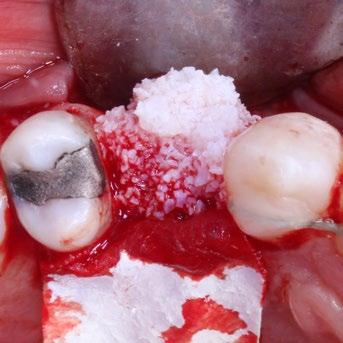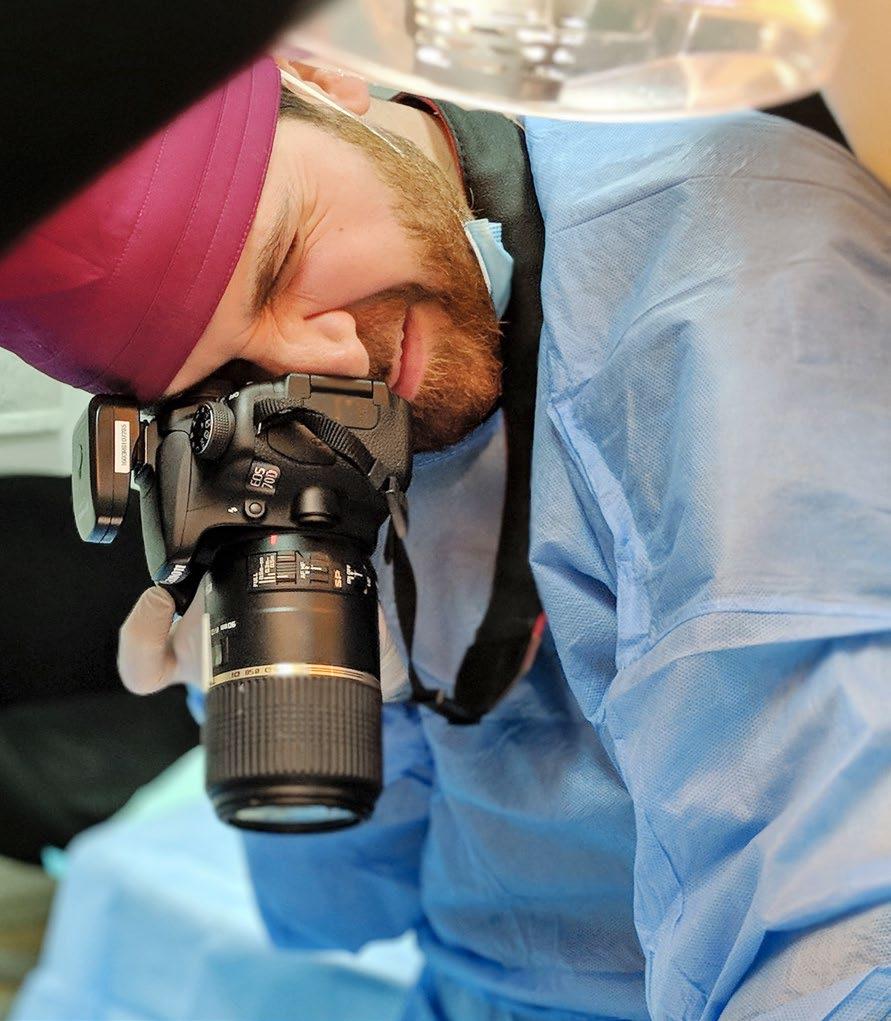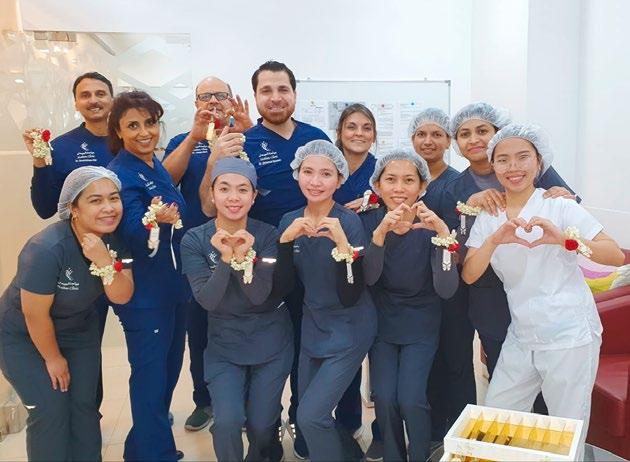
7 minute read
Five ingredients of an effective social media account
The rise of digital opinion leaders Five ingredients of an effective social media account
Dr. Mohamad Bassam | Lebanon DDS, DESS Periodontology & Implant Dentistry Maidan Clinic, Sabah Salem Branch Manager, Kuwait
Even before the Covid-19 outbreak, the use of virtual platforms was already on the rise. With the pandemic, many new platforms were launched to adapt to the “new normal”. It was the time for the emergence of the new thought leaders who adopted the modern evidence-based dentistry, with all its digital features.
Social media includes several internetbased tools including, but not limited to, blogs, internet forums, content communities and social networking sites such as Twitter, YouTube, Facebook, LinkedIn, GDPUK, Instagram and Pinterest.¹ Today there are more than 4.3 billion social media users worldwide, almost half the world’s population.²
A new era
With the outbreak of Covid-19, many new platforms were launched, to adapt to the “new normal” during lockdowns and curfews. Online conferences were broadcasted, like “Geistlich+You”, and the “new normal” opened new opportunities for young clinicians to share their talent and skills with the dental community. It was the time for the emergence of new speakers and mentors who adopted modern evidence-based dentistry with all its digital features, biomaterials, techniques, and professional documentation.
My social media journey started with Instagram, the most popular social media application in the country I reside. Instagram has a suggestion mechanism –it informs your Facebook friends and suggests your account to other Instagram users with similar interests. I first posted some of my old clinical cases. I also tried to observe the other high-impact influencers and learned that high-quality clinical case images, procedures, and surgical techniques are the most interesting for clinicians, with the highest level of engagement.
I upgraded my photography skills and equipment, e.g. used a more advanced camera and lighting system. Then I started to post clinical cases with high quality on a daily basis, and with a detailed description of the surgical protocol in the captions. I answered all the comments, as well as the private messages. Sometimes, I had to consult digitally with my colleagues and help to identify the right treatment for their patients. Sometimes I sent them the related references and scientific articles. My account started to grow, and I noticed the inspiration I was spreading with every post.
1. Start with strategy
In the dental community, social media is used not only to extend our professional network, but also to educate patients, build trust, influence, and help to develop our practice.
To use it to benefit the community and build a successful page, we need to make our purpose clear and follow a strategy. It starts with being transparent about who we are. For example, in Instagram, having an attractive and informative “Bio” which shows the domain of expertise, level of education, and a link to
other personal social media pages like twitter, Facebook, YouTube, and website is important.
2. Find your audience
We need to target and decide who our audiences are, and then plan the right content for each group of them.
For example, dentists often tend to “like” and “comment” on multidisciplinary posts, complex surgeries, full-mouth rehabilitations, and full-arch reconstructions. For them, the presentation of the case is particularly important and professional high quality intra-oral and extra-oral photography is crucial.
On the other hand, patients choose to skip and unfollow pages that posts lots of surgery and unpleasant medical case images. Instead, they prefer delightful transformations, before and after photos, and awareness posts.
3. Content matters
Audiences crave for good content. Plan to stay consistent with the content. Include interesting cases, use quality materials, and show new techniques and evidence-based dentistry. Describing the procedure and including annotations make the viewer understand the purpose of the posted clinical case. Also, including questions in the captions, addressed to either patients or clinicians, improves the chance for starting a conversation. Clinical case posts sometime create a lot of interaction and a high range of criticism, as each dentist has his own approaches and scientific belief. To build trust with the audience, having a scientific approach, and citing the evidence and references is crucial, and increase the creditability of the clinical work.
4. Interact and optimize the relationship
“When to post?” The most active time of the audience in social media is often early morning, at lunch break, and evening. Posting during the peak of audience activity will get you the most reach and engagement and help to grow your account. Posting on daily basis, e.g. the Instagram stories is also important. We may use voting polls, or use questions and answers in stories, for more interaction and getting in direct contact with the followers.
One way to come into direct conversation with the audience is “live stream”. The topic can be sharing experience, protocols, tips and tricks or anything interesting. A weekly or monthly live stream conversation can give you a hint of what the audience are truly interested in, and inspire you with more ideas. Hashtags will help to spread the post and reach more people. It is possible to use up to 30 hashtags in an Instagram post. Try to find the top hashtags that targets the audience you want and use them all. Such strategy might make you hit the explore page (where Instagram curates content for its users). Also tagging people, other pages and locations will increase the rate of engagement and your page visibility. When you have set multiple posts on your page and your account starts to grow, you may start tagging your friends, and even the social media influencers and large accounts, to invite them to view your posts, and ask if they are willing to collaborate.
Follow-up with your posts, and your “reposts” by other accounts and pages on daily basis and respond the comments. And promote your page on other platforms like twitter, Facebook, and others.
High-quality clinical case images, procedures, and surgical techniques are the most interesting for clinicians, with the highest level of engagement.
5. Digital liabilities
Success in a digital era requires digital liabilities. It is crucial to acquire a legal consent form signed by the patients to allow the dental practitioners to take photographs and share them in lectures and social media. Practitioners will be liable if this information/data is shared or misused without patient’s approval.
The General Dental Council (GDC), which is main regulatory body for dental professionals in the UK, sets standards for their dental professionals. “You must not post any information or comments about patients on social networking or blogging sites.¹ If you use professional social media to discuss anonymized cases for the purpose of discussing best practice you must be careful that the patient or patients cannot be identified”. Even the online discussions between patients and dentists must be avoided since it can introduce legal complexities and lawsuits, especially if inappropriate comments are made.³
The future is here
Social media is a double-edged instrument. It led the market and became an important educational platform in the world especially during Covid-19 pandemic by offering a wide range of content for dental students, and even the experienced dentists.
Educational content has become easy to access, with a reduced cost, making it an important source of learning for trainees and newly graduated dentists. But it is also crucial to choose the educational materials carefully prior to embracing them. Without review and supervision, the quality of information might be insufficient sometime. Everyone with an account can post any clinical case, or statements without evidence or reference. This can spread a large array of false information. “Missing information” can be as dangerous as “misinformation” in social media.
It is on the qualified clinicians and dental professionals to be aware and not re-post false or potentially harmful information, guide the trainees and newly graduated dentists, and patients for the best treatment options, materials, and workflows in dental practice, and use the social media for the benefit of the dental community.


References 1 General Dental Council. Guidance on using social media. Effective from 27 June 2016.
2
3 Hootsuite and We Are Social, retrieved from https://datareportal.com/reports/digital2021-april-global-statshot Chauhan B. et al.: J Med Pract Manage 2012; 28: 206-209.
“The only way to do great work is to love what you do.” Dr. Bassam and his team at Valentine’s day 2020 on Instagram.










